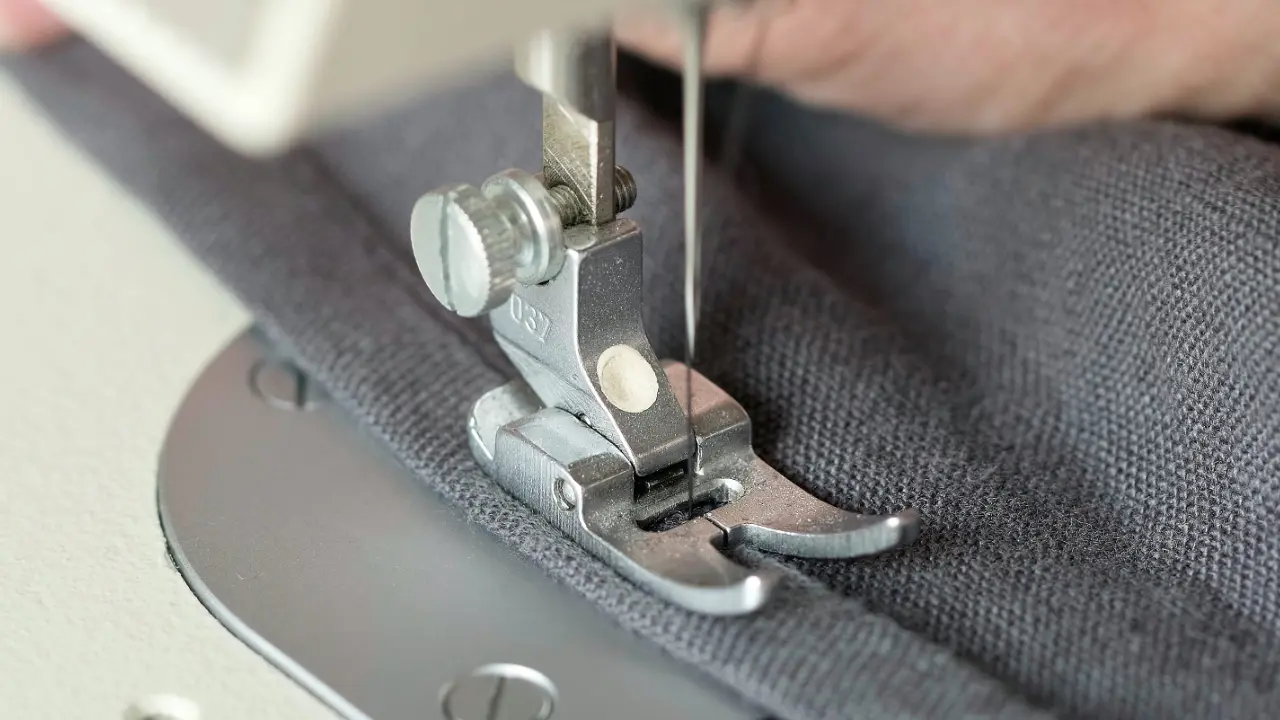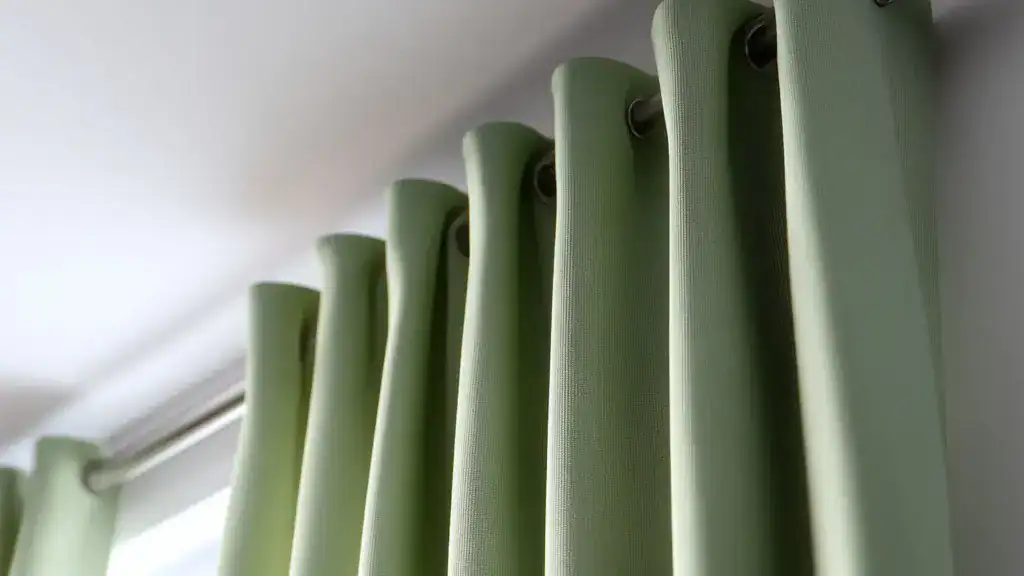10 Affordable Window Treatments That Look Expensive

Elegant window treatments don’t have to break the bank.
Maybe you’ve just moved into a fixer-upper and don’t yet have the scratch for those high-end window covers you’ve always wanted. Or maybe a new sectional sofa and 98″ OLED TV will take priority in your redecorating strategy.
Either way, we’ve got you covered with ten budget-friendly window treatment ideas that will make your space look like a million bucks without actually spending it.
1. Layered Curtains for Depth
Layered curtains can create an illusion of grandeur without burning a hole in your pocket. It’s all about mix and match!
Start with inexpensive sheer curtains to let in the light, and top them with thicker, darker curtains for privacy and temperature control. You can find these at discount home goods stores or even second-hand shops.
The layered effect adds depth, texture, and a luxurious feel, and gives the impression of custom-designed window treatments.
As for pairings, the world is your oyster. Here are some possible combinations and the impressions they create:
- Opulence: Gauzy sheer curtains with rich velvet drapes.
- A contemporary feel: A simple white curtain under a patterned drape.
- Playful: Sheer curtains with a bold, bright-colored valance.
- Garden casual: Floral print curtains with solid color sheers.
- Country style: Linen curtains paired with rustic burlap for a cozy, country style.
- Mix of modern and traditional: Metallic sheers under heavy blackout curtains.
2. Repurposed Sheets or Tablecloths
Don’t underestimate the potential of repurposed materials! Bedsheets and tablecloths can be transformed into beautiful window treatments.
First, choose a sheet or tablecloth that you love for its color, pattern, or texture that harmonizes with your room’s vibe.
Next, you’ll need to get crafty — but don’t worry, it’s nothing complicated. You cut the sheet or tablecloth to the correct size, hem the edges (using no-sew hem tape if you’re not up for sewing), and attach clip-on curtain rings. Voila! You’ve got genuinely unique and budget-friendly window treatments.
3. DIY Roman Shades
Roman shades are ideal for DIY projects because they’re simple, even for beginners. You only need fabric, basic tools, and a little time to craft these stylish window treatments.
They offer a neat, streamlined look that other window treatments can’t match, making your room seem more polished and put together. And because you’re making them yourself, you have complete control over the design. You can choose any fabric, pattern, or color you like. You can line the shades for added privacy or insulation.
To get your DIY project underway, you’ll need enough fabric to cover your window, a sewing machine or no-sew hem tape, a dowel or slat for the bottom of the shade, and a Roman shade kit for the top. The kit should include a headrail, cord, cord lock, and mounting hardware.
4. Luxurious Drapery on a Dime
Opting for budget-friendly treatments doesn’t mean you have to sacrifice style. Consider drapes in rich textures like velvet or faux silk, and deep like navy, emerald, or burgundy to mimic the splendor of high-end drapery. These fabrics have a beautiful fall, while deep colors lend a regal quality.
Hang the drapes high and wide. Start the rod close to the ceiling and extend it 3 to 6 inches beyond the window frame on either side.
This creates the illusion of larger windows, but floods the room with natural light, making your space look bigger and brighter. Grandeur is more about the perception of luxury than its actual cost.
5. Chic Bamboo Matchstick Shades
Matchstick shades offer a high-end look without the hefty price tag. They allow diffused light to permeate the room, creating a cozy atmosphere, while bamboo’s warm tones and rustic texture bring depth and character to your windows.
Styles include roll-up, Roman, and cordless for convenience. Finishes can be flat, oiled, lacquered, and painted for different looks.
You can find matchstick shades at many home goods retailers. They’re among the easiest window treatments to install.
6. Stenciled Drop Cloth Curtains
Stenciled drop cloth curtains are the undisputed queens of the DIY window treatment world. With a bit of imagination and elbow grease, you can transform an ordinary drop cloth into a one-of-a-kind statement piece. Here’s how:
- Choose a drop cloth in a color and texture that compliments your space. Cotton canvas drop cloths are ideal, as they mimic the appearance of more expensive fabrics.
- Select a stencil that matches your design aesthetic. Try a geometric pattern for a modern look or a floral design for a more traditional style.
- Use a foam roller to apply fabric paint over the stencil. Ensure even pressure for an even paint application.
- Allow the paint to dry before hanging the drop cloth (duh!).
- Attach curtain clips to the top of your drop cloth. Then, hang the fabric from your curtain rod!
Drop cloths are inexpensive and readily available at most hardware stores. They offer a neutral base for any color or pattern.
And because you’re creating the design yourself, you can achieve any look you want, including the look of high-end custom curtains, for a fraction of the price.
7. Vintage Lace Panels
Do you tat?
We’re not talking about skin ink but the delicate and somewhat lost art of lace-making. You can find YouTube videos detailing the process or browse thrift stores and specialty shops for vintage lace panels.
Once you have your panels, hang them with clips on a curtain rod. Decorative rods and rings give you a more traditional presentation. Lace panels are usually light enough to forgo the heavy-duty hardware, making them easy to install and a breeze to take down for washing.
8. Tassel Tiebacks: Elegant Details
Often, the smallest details can make the biggest impact. Cinching your curtains with a tassel tieback adds sophistication and flair to your window treatments.
Opt for tassel tiebacks in hues like burgundy or gold for a classic, royal look. Consider tiebacks with geometric shapes or sleek lines if your interior is more contemporary.
Another option is beaded or shell tiebacks for a bohemian or beachy note.
9. Faux Wood Blinds: Budget-Friendly Sophistication
Wood Blinds tend to be pricey. But faux wood blinds offer the same classic appeal while being more affordable.
Faux wood blinds hold the advantage in high-humidity spaces like kitchens and bathrooms. Unlike their wooden counterparts, they stand up to the damaging effects of moisture and won’t warp, crack, or promote mildew growth. Their synthetic materials are inherently moisture-resistant.
So, faux wood blinds are the way to go for homeowners seeking the elegance of wooden blinds at a fraction of the cost. They’re also lightweight, easy to clean, and strong enough to withstand everyday wear and tear.
10. Creative Curtain Rods
Do your stylish window treatments hang on dull, run-of-the-mill hardware? Consider swapping out traditional metal or plastic rods for more inventive options like:
- Industrial pipe for a rustic, industrial appearance.
- Rope or twine for a nautical or bohemian spirit.
- Tree branches for a natural, earthy feel.
- Decorative hooks with ornate finials for a touch of elegance.
With some elbow grease, you can turn ordinary objects into one-of-a-kind curtain rods and conversation pieces. Just be sure the rod is strong enough to hold the curtains.
Window Treatments in Los Angeles
Now that you’ve explored the budget and DIY possibilities for window treatments, would you prefer something on the higher end?
If you live in metro Los Angeles, please call us at Aero Shade. We’ve been in the window treatment business since 1947 and have hung shades, blinds, and curtains for dozens of Hollywood celebrities, prominent local corporations, and schools.
We can customize any window treatment to fit perfectly and look like a million bucks, and we back up every job with best-of-breed warranties and customer service.
Call us today to learn what we can do for you! 323-457-2835. All estimates are free.
FAQs: More about Affordable Window Treatments
Q: Is it possible to have quality window treatments on a budget?
With creativity and DIY skills, you can have beautiful and stylish window treatments without spending a fortune. Choose budget-friendly materials and techniques, such as stenciling drop cloths, while watching for sales and discounts on more traditional options like drapes or blinds.
Q: Are DIY window treatments difficult to make?
It depends on the window treatment type and your experience level. Some DIY projects, like no-sew curtains or stenciled drop cloths, are relatively simple and can be done by beginners. However, projects like Roman shades may require sewing skills or willingness to learn new techniques.
Q: How can I ensure my DIY window treatments look polished and professional?
The key is attention to detail. Take your time measuring and cutting the fabric, and use quality materials and tools. It’s also helpful to research techniques and watch tutorials before starting your project.
Q: What should I consider when choosing fabric for window treatments?
Think about the function of the room and the window. If the room gets a lot of sun, consider a light-blocking fabric. For a room that needs privacy, a heavier, less transparent fabric could be a good choice. Also, what’s the aesthetic of your space? Do you want the window treatments to blend with the decor or be a focal point?
Q: How can I keep my window treatments clean?
Dust and vacuum your window treatments regularly. Some fabrics can be machine washed for deeper cleaning, while others need to be dry-cleaned. Always check the care instructions for the fabric.
Q: How can I make my small windows look larger with window treatments?
Hang your curtains higher and wider than the window. This creates the illusion of a bigger window. Opt for lighter colors and sheer fabrics to make the space brighter and feel larger.
Q: What benefits do faux wood blinds offer over real wood blinds?
Faux wood blinds are more affordable and moisture-resistant than natural wood, making them a good choice for high-humidity areas. They’re also lighter, easier to clean, and less likely to warp, crack, or grow mildew.
Q: Is it possible to mix and match different window treatments in the same room?
A: Yes. Just keep a cohesive color scheme or theme to tie everything together.
Q: How do I measure my windows for curtains or blinds?
For curtains, measure the height from the rod to the floor and the window’s width. Add extra width for fullness. For blinds, measure the width and height inside the window frame.
Q: Can I use outdoor fabric for indoor window treatments?
Outdoor fabric can be an excellent choice for high-traffic areas or rooms that receive a lot of sunlight, as it’s typically more durable and fade-resistant than indoor fabric.


